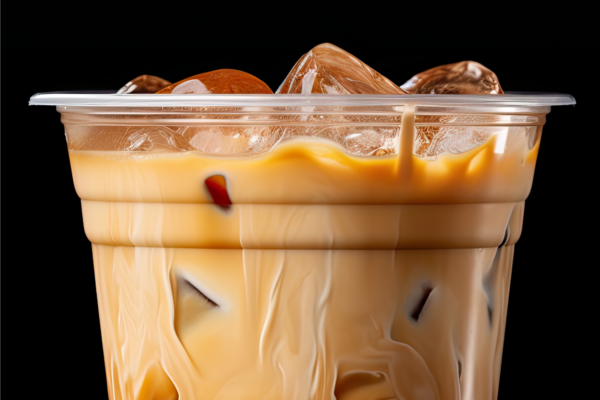We recently hosted our first COVID-19 webinar, discussing trends in foodservice and retail as the food industry and consumers continue to react to the unraveling coronavirus crisis. This week, we discussed how chains, independently-owned restaurants, and more are reacting to the various lockdowns across the country.
Coronavirus impacts so far
March 10th was the last pre-crisis day we had in this nation. Things really changed on March 11th. That’s when the WHO declared a global pandemic and non-news junkies became aware of the crisis as Tom Hanks and Rita Wilson announced they had contracted coronavirus and the NBA suspended their entire season.
Concerns over coronavirus began rising steeply. Over that week, mandatory restaurant closures began in Illinois, California, Ohio, Massachusetts, and Washington state. On March 16th, the Dow Jones dropped 2,997 points.
Less than two weeks later, Congress signed the CARES Act into law. Between that signing and our next survey, the White House Coronavirus Task Force held a concerning briefing. During this briefing, they projected that US deaths would reach 100,000-240,000 and could reach up to 2.2 million deaths without social distancing. Hearing these numbers from Dr. Anthony Fauci, a trusted expert in immunology, alarmed many consumers. As such, consumer behavior patterns have been very difficult to predict as they’re largely driven by the daily news.
In early March, only a minority of consumers were worried about eating out. After March 18, we saw a steep incline that quickly flattened out with around 62% of consumers “definitely avoiding eating out.” As of April 3, 67% of consumers would “definitely avoid eating out.” This was an enormous jump since March 10.
Eating out has become a minefield
Many unavoidable activities that were innocuous just a few weeks ago have become paranoid points of concern for consumers. Door handles, soda fountains, and condiment bottles are among the multitude of perceived risky propositions consumers face inside a restaurant or cafeteria. A lot of the fear of coronavirus stems from its ability to fly under the radar. With such little ability to detect and isolate the virus, consumer concern of coming in contact with it is high.
Historically, great taste was always the number one consideration when choosing a restaurant. No longer. Today, cleanliness and sanitation have bolted to the number one spot by a significant margin. Taste has fallen, not to second, but to a lower tier of consumer considerations.
When advertising, those slow-motion clips of delicious-looking food won’t have the same impact they used to. Explore opportunities to lead with an assurance of cleanliness and safety, easing consumer concerns.
Hands off!
When we asked consumers what they’re most concerned about, we found it really has to do with the sense of touch. Consumers are avoiding coming into contact with things others have touched the most – countertops, napkin dispensers, chairs, cash, utensils, and countless other surfaces that are almost unavoidable.
Being too close to other people (at least 6 feet of distance is recommended) is another big concern. As large groups of people gather to wait for carryout orders, along with lots of delivery drivers, social distancing is made incredibly difficult when picking up food.
Unfortunately, while many restaurants had initially elected to introduce delivery and curbside pickup options, some have now chosen to shutter operations in order to help their staff maintain social distance.
Overt sanitation
In our interview with psychologist Dr. Paul Rozin, he points to something we should all be practicing to put consumers at ease. Instead of just cleaning, he suggests overt sanitation. Make your cleaning efforts super obvious and visible to consumers, over and over again. Go excessively overboard if need be.
Operators should take great care to diagnose and remediate any potential points of exposure visibly. Even if there’s something you’re doing that seems medically safe, if there’s consumer doubt, you’ll want to address it.
Delivery is a hand grenade
The experience goes beyond consumers getting their food. If eating out has become a minefield, delivery and pickup orders are live hand grenades. For the consumer, there are all sorts of concerns they have to deal with before being able to sit down and enjoy.
We asked consumers what was top-of-mind and at the time of fielding the research, more than half of the United States had closed dining rooms and had been put under a shelter-in-place order. This likely changed many habits for consumers eating restaurant food brought into their homes.
Naturally, everyone is washing their hands a lot more and disinfecting surfaces before eating. You may be surprised to learn that many consumers are even disinfecting containers before opening them.
This creates additional opportunities for operators and suppliers to overtly make this a safer proposition for consumers by:
- Providing sanitizing wipes to help disinfect packaging upon arrival. Cleaning supplies can be difficult for your customers to get right now.
- Providing tamper-proof seals on packaging –even if they’re just small stickers to indicate if containers have been opened, consumers will feel at ease knowing their Uber Eats driver didn’t snag any of their fries.
Behavioral changes since COVID-19
With numerous concerns around delivery and pickup food, many consumers are relying more on cooking or baking “from scratch” at home. Additionally, tied to increased baking, we’re seeing an increase in “comfort” foods as consumers search for ways to feel more normal.
Unsurprisingly, we’ve also seen a substantial decrease in consumers trying new restaurants. Largely, diners are going back to things they know and what’s comfortable for them. In a time of psychological uncertainty, people want some comfort and certainty in their lives.
“Live to eat” became “eat to live”
As people are hunkered down in a situation that causes a lot of uncertainty, the “live to eat” lifestyle is a luxury many can’t afford. Consumers aren’t looking for new, Instagram-able food experiences right now. Instead, they’re focused on ensuring they have enough food to feed their families for potentially weeks on end.
As far as foods consumers want from restaurants during the coronavirus crisis, pizza tops the list. While it starts with pizza, it definitely doesn’t end there. Consumers are also hungry for burgers, meat entrees, pasta dishes, and other comfort food options.
The familiarity of these foods goes hand-in-hand with their ease of delivery; they travel well and reheat well, unlike dressed salads or frozen desserts. The best strategy right now is to stick with consumer favorites. Focus on popular menu items and show the customer that they’re totally safe.
The perfect time to innovate and reiterate
When we asked consumers what would motivate them to get food from restaurants during this crisis, consumers didn’t connect with any one strategy. Interest was spread fairly evenly across a wide variety of compelling strategies.
From take-and-bake items to donations, expanded hours and delivery zones, to even including free toilet paper and hand sanitizer with orders, now is the time to experiment. While you may have never considered delivering toilet paper, we’re in a period of aggressive adaptation and innovation towards new ways of doing things.
There are lots of things restaurants can do to encourage people to order delivery, takeout, or curbside. Consumers are generally open to an array of options, so for restaurants, it’s about finding the one that can be executed safely and well.
Lessons from the past
While we’ve never experienced a pandemic this large, the 2008 recession had similar, but less detrimental, impacts. During that time, restaurants reacted by shrinking menus substantially and offering value-based promotions, which left many behind the market. Innovation pipelines seemed to shrink, while restaurants that continued to focus on innovation came out ahead.
You don’t want to be stuck playing catch up. If you leave with one takeaway, it should be: don’t let the innovation pipeline go dry. The activities and behaviors we see from consumers today are just a reaction to this major event. From what we’ve seen over history, this is not a permanent shift (Who’s tired of chicken dumpling soup already?). You want to ensure you maintain a robust innovation pipeline to avoid playing a long game of catch up.
Consumer dining habits
At least 63% of restaurants have already cut staff. On average, 45% of foodservice staff has already been laid off or furloughed—about 7 million individuals. As we’re seeing this economic fallout, consumer desire to support restaurants that need help or are locally or independently owned has skyrocketed.
When asked who consumers want to support during this crisis, nearly 70% noted they want to back independent restaurants. However, when asked where they actually ate, the majority of consumers ordered from chain restaurants. In fact, more consumers have visited chain restaurants than before the crisis, even though they say that they really want to support independent restaurants.
So why aren’t consumers supporting the very segment they deem most important to back right now? As it turns out, while many consumers wish to support local/independent restaurants and their community, chain restaurants are more likely to be equipped to handle consumer needs right now with services like drive-thrus or an ordering system already in place.
While consumers want to support independents, they’re not really able to do so with current options. Chain restaurants need to pay attention to this desire as well. If you’re a chain restaurant, demonstrate how you’re playing a role in supporting your local community.
Operator optimism
About 26% of operators anticipate the business impact of coronavirus will blow over in just 30-45 days. While the majority (61%) of operators are preparing for 3-6 months, only 13% believe this will be a “new normal” that could last for years. That new normal might only be small adjustments, like moving tables further apart until a vaccine can be implemented. Our survey results point to optimism from a large sector of businesses who are under attack right now.
Stay informed
We’re all living in a time of immense uncertainty and the best way to get through this is by sharing all the data we can. Access our free library of coronavirus reports you can use to guide your business.
For more data—and for that human interaction we all need right now—join our weekly webinars, Fridays at 2pm CST where we’ll discuss how COVID-19 is impacting food and foodservice.
As the coronavirus crisis continues to unravel, Datassential is committed to supporting all of our partners in the food industry.






